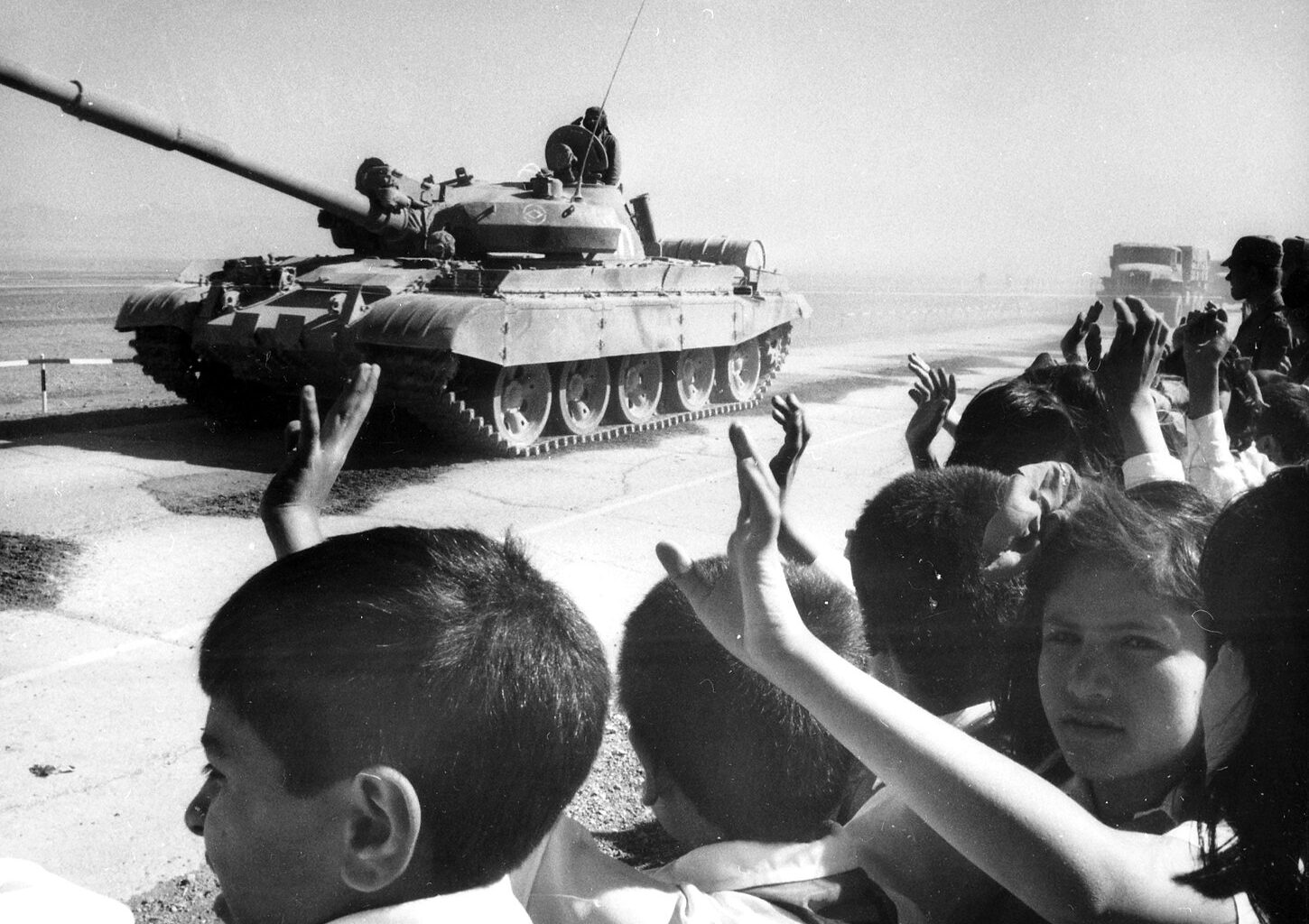‘’Russia is militarily invincible," Kazakhstan’s President Kassym-Jomart Tokayev once said. In fact, the word ‘’invincible’’ is quite regularly used in relation to Russia’s military. From military analysts to political pundits and journalists, hyperboles abound when people attempt to measure Russia’s power.
Of course, invincibility, in general, is quite a myth. It simply won’t survive scientific scrutiny. Countries win and lose wars, and so too does Russia. However, the image of Russia as an ‘’invincible’’ military force perhaps lives stronger in the imagination than do other armies.
As former Ukrainian Defense Minister Andriy Zagorodnyuk says, Russia has pushed this myth so successfully that many worldwide believe Russia simply cannot be defeated, discouraging potential allies from providing Ukraine with much-needed military aid.
Without a doubt, the Russian Armed Forces are not to be underestimated. They are considered to be a ‘’near-peer competitor’’ by the United States for a reason. In addition, regardless of all the serious deficiencies Russia’s military has, the destructive potential of its force is laid bare in Ukraine every day, where the Ukrainian army has been resisting this brutal war machine for many years.
Nonetheless, a glance at modern history reveals certain episodes in Russia’s past that showcase why the idea of ‘’invincibility’’ can be considered mythical in nature. Which examples are there, and what were the reasons for Russia’s defeat during these historical episodes?
Key points:
- Russia's military, while formidable, has faced several significant defeats that challenge the notion of its invincibility
- Common factors in Russia's military setbacks include logistical challenges due to its vast territory, technological backwardness compared to opponents, and underestimation of adversary capabilities
- Strategic miscalculations, diplomatic isolation, and internal political instability, have undermined Russian military effectiveness in the past
- Foreign support for Russia's opponents, whether through direct military aid or diplomatic alliances, has played a crucial role in these defeats
- Russia's military power has been constrained by systemic weaknesses in governance, military leadership, and economic limitations, affecting power projection and long-term military operations
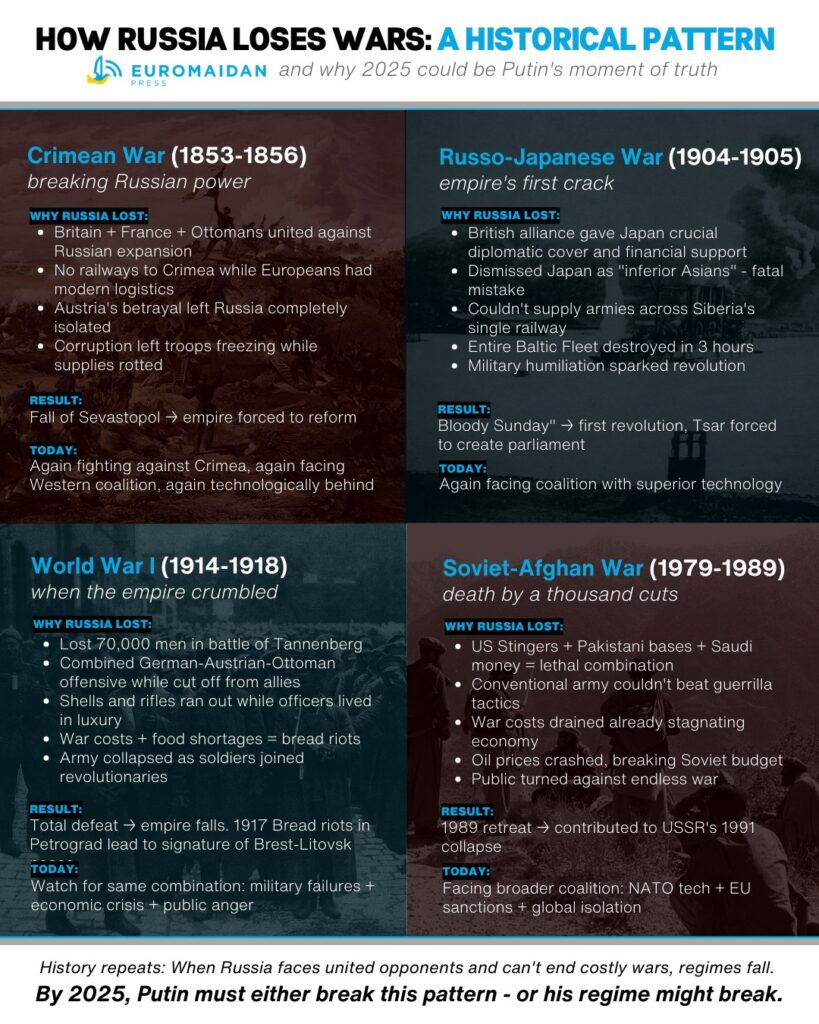
Crimean War
During the Crimean War (1853 – 1856), Russia's military was ill-prepared for the conflict, suffering from outdated technology and inefficient leadership. The Russian army's weaknesses were exposed when faced with the more advanced allied forces. The war highlighted the profound deficiencies in the Russian armed forces, which ultimately led to significant reforms in Russian military organization.
Russia's poor infrastructure, particularly its lack of railways in the southern direction, severely hampered its ability to supply and reinforce troops in Crimea. This logistical weakness made it difficult for Russia to effectively conduct military operations and respond to Allied advances.
In addition, one of the most significant factors in Russia's defeat was its diplomatic isolation. The Russian-Austrian alliance, which had existed since the reign of Catherine the Great, crumbled during this conflict. Instead of support, Russia found itself facing about 250,000 Austrian troops along the Danube. This diplomatic setback was crucial, as it prevented Russia from fully committing its forces against the Ottoman Empire and its allies.
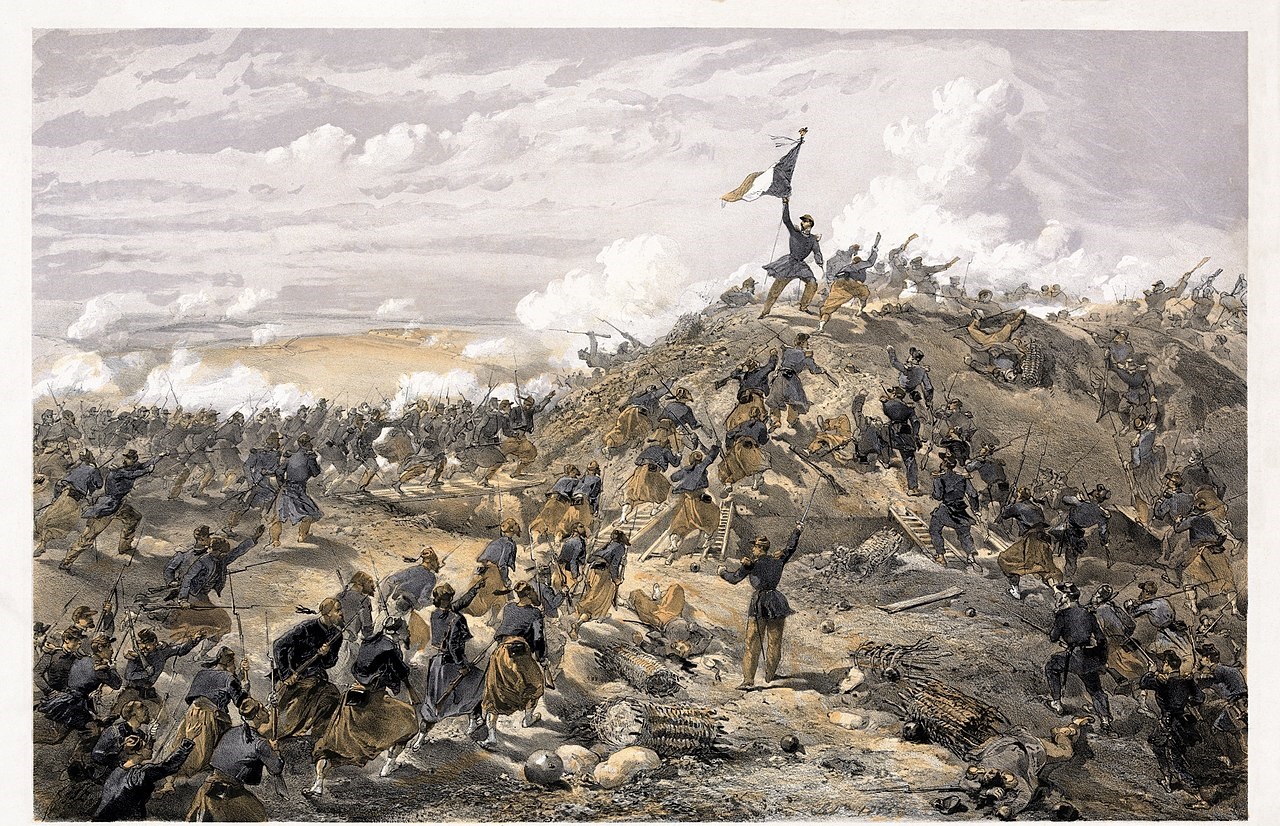
In contrast, the allied powers, particularly Britain and France, had superior technology, better-equipped armies, and more efficient supply lines, even if operating far away from their homelands. Their naval superiority allowed them to effectively blockade Russian ports and launch amphibious operations in Crimea. Within three months, starvation and disease so weakened the Russians that they could no longer sustain the battle for Sevastopol.
The war's turning point came with the siege of Sevastopol. After extended preparations, allied forces landed on the Crimean peninsula in September 1854. The siege involved brutal conditions for troops on both sides. Eventually, on 11 September 1855, three days after a successful French assault on the Malakhov, a major strongpoint in the Russian defenses, the Russians were forced to evacuate Sevastopol.
The Crimean War marked a turning point for the Russian Empire. It exposed Russia's technological and industrial backwardness, with Paris often learning about battle outcomes before St. Petersburg. The war weakened the Imperial Russian Army, drained the treasury, and undermined Russia's influence in Europe. The empire's humiliation forced its educated elites to recognize the need for fundamental reforms.In conclusion, Russia's defeat in the Crimean War was the result of a complex interplay of military, technological, logistical, and diplomatic factors. The conflict exposed the profound weaknesses of the Russian state and military, leading to significant reforms and reshaping the geopolitical landscape of Europe for decades to come.
The imperialist nature of the Crimean War echoes to the present day, as the focal point of that war - the dismemberment of the Ottoman Empire, and the strategically crucial location of Crimea where the main battles were fought -- is reflected even today in the Russo-Ukrainian War.
Back then, Crimea was crucial for projecting Russian power in the Black Sea and beyond. Its importance remains in the minds of the Russian leadership today. So much so that it chose to annex it from Ukraine, thereby going against internationally agreed-upon norms, values, and law.
Russo-Japanese War
Tsarist Russia severely underestimated Japan's military capabilities and resolve during the Russo-Japanese War (1904-1905). This miscalculation led to poor strategic decisions and inadequate preparation. According to Philip Streich and Jack S. Levy, Russian political and military leaders' underestimation of Japanese capabilities and resolve generated highly intransigent Russian bargaining behavior. This underestimation was rooted in racial and cultural stereotypes, as well as psychological biases.
Tsarist Russia faced significant logistical difficulties in supplying its forces in the Far East. The Trans-Siberian Railway, still incomplete at the time, was the primary supply line. This single-track railway proved inadequate for transporting troops and supplies over such vast distances, hampering Russia's ability to reinforce and resupply its forces effectively.
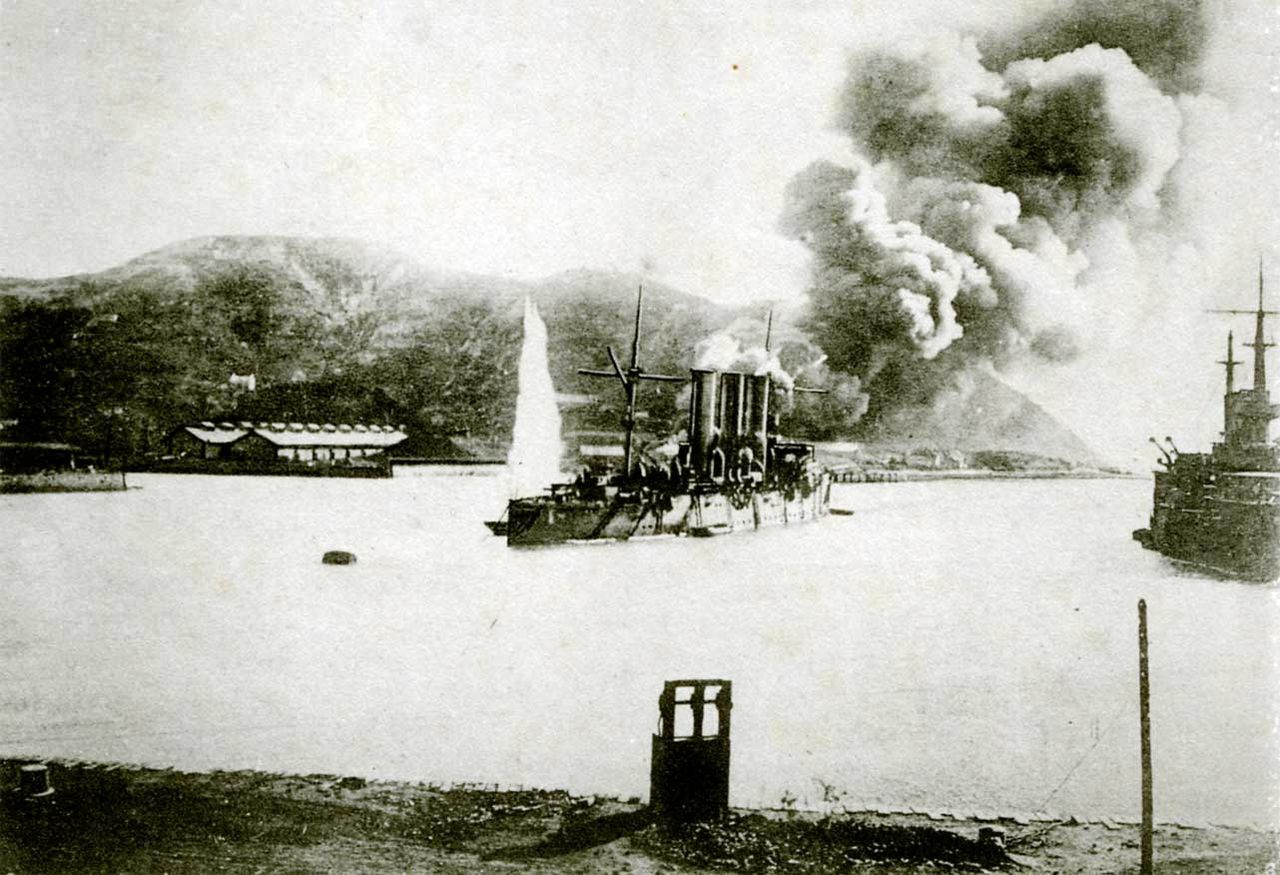
Furthermore, Tsarist Russian military leadership made several strategic blunders. Russian generals focused on taking offensive actions prematurely instead of defending, leading to defeats at battles such as Mukden, where Russian forces were outmaneuvered by the Japanese.
Tsarist Russia was dealing with significant internal problems, including growing revolutionary sentiment. This internal instability diverted attention and resources from the war effort. For instance, the unrest in Poland forced Russia to keep a large army there, reducing the forces available against Japan.
Japan, on the other hand, benefited from several factors. They had a more modern, well-equipped army, trained by German advisors. Japan also enjoyed a central strategic position, allowing for easier supply lines and troop movements.
The Russo-Japanese War exposed deep-seated weaknesses in Tsarist Russia's military, strategic planning, and overall governance. The conflict's outcome triggered a major loss of prestige for Russia, as Russia was considered to be the first European power to be defeated by an ‘’Asian’’ power. In hindsight, one can say that the war’s outcome would function as one of several nails in the coffin of Tsarist Russia.
Just as Tsarist Russia underestimated Japan based on cultural and racial prejudices, modern Russia appears to have similarly underestimated Ukrainian resolve and capabilities. The initial Russian plan to capture Kyiv within days reflected a profound misreading of Ukrainian military competence and national determination – much like how Russian leaders in 1904 dismissed Japan's fighting capacity.
World War I
Tsarist Russia's defeat in World War I (1914-1918) was the result of a combination of factors that ultimately led to the collapse of the Russian Empire and its withdrawal from the conflict.
Once again, the vast size of the Russian Empire posed significant logistical difficulties. It took more time to build the railways, hampering Russia's ability to effectively transport troops and supplies to the front lines. This made it challenging to sustain prolonged military campaigns, especially against the more industrialized and efficient German forces.
The Tsarist military also suffered from ineffective leadership and a lack of coherent strategy. After some initial success, Russia quickly suffered several significant military defeats. The Battle of Tannenberg in August 1914 was a crushing blow, resulting in the loss of about 70,000 - 92,000 men, killed or wounded.
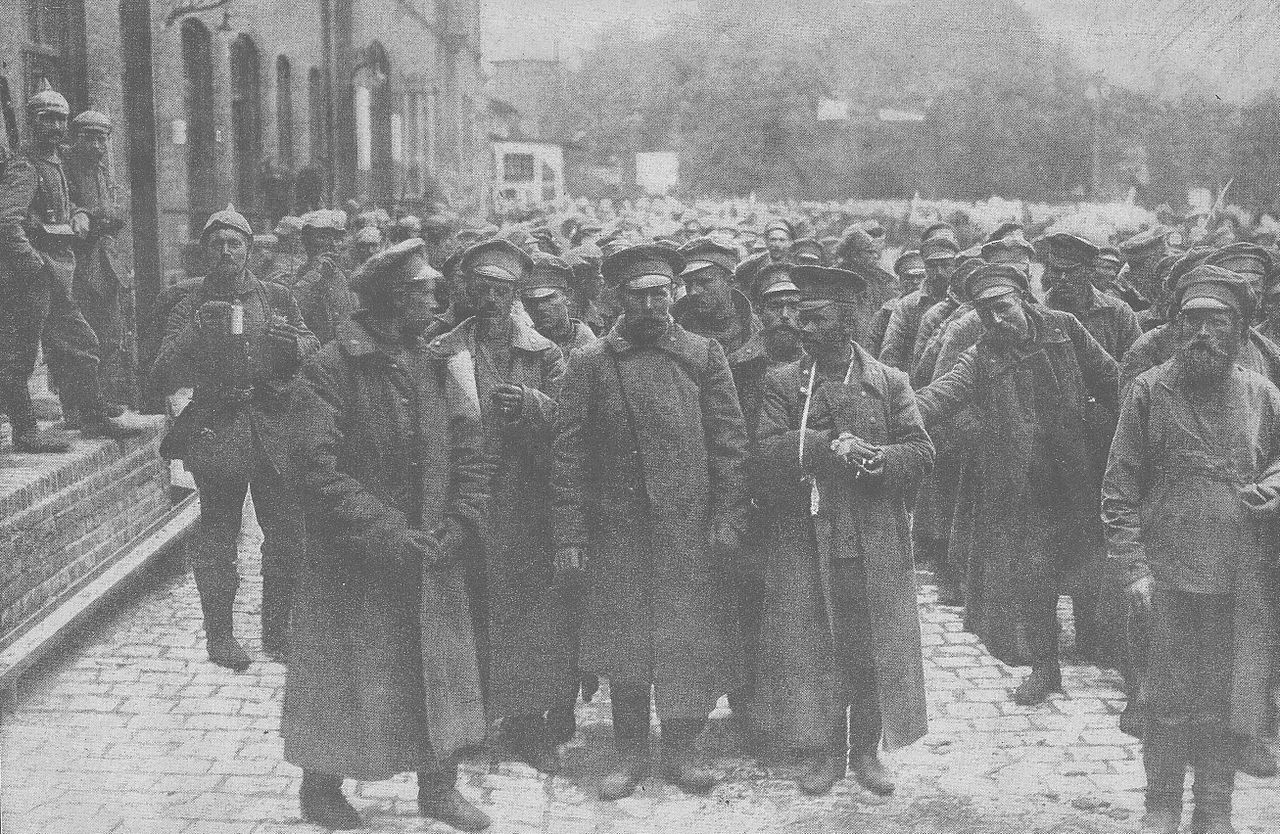
Subsequent German victories in East Prussia and Galicia forced tsarist Russia to abandon large swathes of territory, including Poland, parts of Belarus, and the Baltic region. Although the Tsarist army did manage to implement an impressive offensive in 1916 (the Brusilov offensive) to ease the pressure off their allies in the West, it could not turn the tide of the war in Russia’s favor.
Trending Now
The war's economic and human toll led to widespread dissatisfaction with Tsar Nicholas II's government. Food shortages in Russian cities triggered the February Revolution in 1917, causing a decline in military discipline. The Tsar's abdication in March 1917 further destabilized the country, and although the Provisional Government chose to continue fighting, Russia's last offensive in July 1917 ended in failure.
The October Revolution in November 1917 brought the Bolsheviks to power. They immediately sought to end Russia's involvement in the war, leading to peace negotiations with Germany. On 3 March 1918, Russia signed the Treaty of Brest-Litovsk, ceding vast territories to Germany in exchange for peace.
In conclusion, Tsarist Russia's defeat in World War I was the result of a perfect storm of military unpreparedness, logistical challenges, economic weakness, significant battlefield losses, and internal political upheaval. These factors combined to force Tsarist Russia out of the war and ultimately led to the collapse of the Russian Empire and the birth of the Soviet Union.
Just as the Tsarist regime discovered in 1917, the combination of military setbacks, economic hardship, and social disruption can create a momentum that becomes increasingly difficult to control. While the current Russian state has far more sophisticated tools for maintaining domestic order than its Tsarist predecessor, the historical parallel suggests that prolonged warfare in the Russo-Ukrainian War can create domestic pressures that even the most seemingly stable regimes struggle to contain.
Soviet-Afghan War
The Soviet Union's failure in Afghanistan (1979-1989) can be attributed to a complex interplay of factors that ultimately led to their withdrawal and the conflict's status as the "Soviet Vietnam."
Soviet leadership severely misjudged the determination and capabilities of the Afghan ‘’mujahideen’’ (an Arabic term that broadly refers to people who engage in jihad). They initially believed the conflict would be resolved quickly, but instead faced a protracted guerrilla war.
The introduction of US-supplied Stinger missiles in 1986 was particularly impactful, neutralizing Soviet air superiority and forcing a change in their tactics. As casualties mounted and the war dragged on, it became increasingly unpopular within the Soviet Union. The conflict was draining resources and causing significant loss of life, leading to protests and dissent.
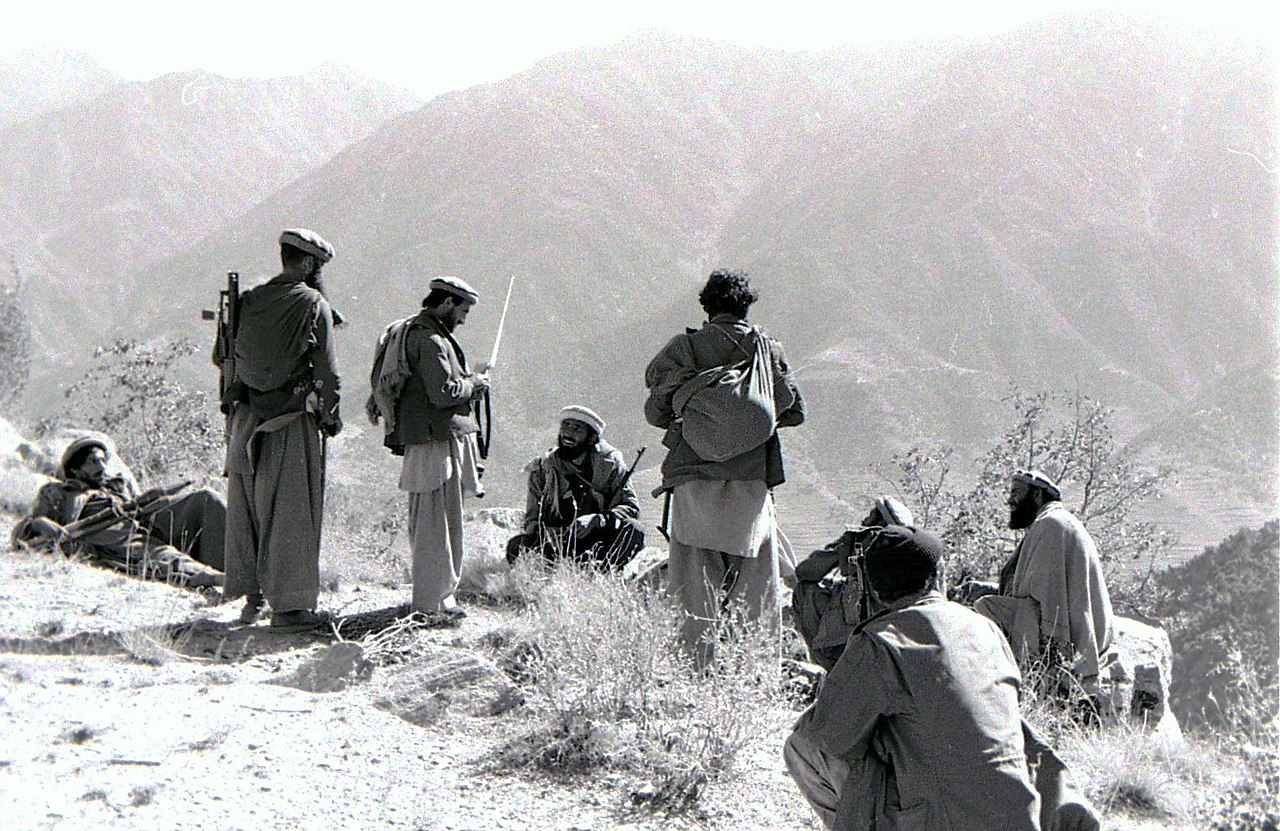
Internationally, the invasion was met with widespread condemnation, economic sanctions, and diplomatic isolation, further straining the USSR's resources and global standing.
Afghanistan's mountainous landscape proved to be a formidable obstacle for Soviet forces. The difficult terrain favored the guerrilla tactics of the mujahideen and made it challenging for the Soviets to maintain supply lines and conduct effective operations. The harsh climate and altitude also took a toll on Soviet troops and equipment.
This religious and cultural dimension of the conflict was severely underestimated by Soviet planners.
The war became an enormous financial burden for the Soviet Union, exacerbating its already strained economy. By the late 1980s, the USSR was struggling to maintain the war effort while also keeping pace in the arms race with the United States.
The conflict's drain on resources contributed to the broader economic challenges that would ultimately lead to the Soviet Union's collapse. The ascension of Mikhail Gorbachev to Soviet leadership in 1985 marked a significant shift in policy. Gorbachev's reforms, including glasnost and perestroika, were incompatible with the ongoing war in Afghanistan. His desire to improve relations with the West and focus on domestic issues led to the decision to withdraw Soviet forces, effectively admitting defeat.
In conclusion, the Soviet failure in Afghanistan resulted from a combination of strategic miscalculations, fierce Afghan resistance bolstered by foreign support, logistical challenges posed by the terrain, cultural misunderstandings, and changing political priorities within the USSR. The war's impact extended beyond the immediate conflict, contributing to the Soviet Union's eventual collapse.
Perhaps most significantly, when compared to the current Russo-Ukrainian War, a similar strategic blindness is revealed. Just as the Soviets failed to understand the cultural and social dynamics in Afghanistan, Russia appears to have misread Ukraine's strong sense of national identity and determination to resist Russian dominance. The assumption that local populations would accept or even welcome Russian forces has proved as misguided in 2022 as it was in 1979.
Conclusion
The idea of Russian military "invincibility" has persisted throughout history, often shaped by perceptions of the nation's vast size, formidable resources, and moments of military triumph. However, as the historical episodes examined reveal, this idea or myth is fragile when scrutinized through the lens of reality.
From the logistical inadequacies and inferior quality of the army in the Crimean War to the strategic blunders and internal instability of the Russo-Japanese War, and from the unpreparedness and upheaval of World War I to the ideological and tactical misjudgments in Afghanistan, Russia's defeats have been shaped by an interplay of systemic flaws and leadership failures.
What emerges from these four defeats is a consistent formula: regimes fall
- when Russia faces united international coalitions
- when wars drag on beyond initial expectations
- and when military setbacks combine with economic strain.
Today, this historical pattern looms over Putin's regime. Former Deputy Energy Minister Vladimir Milov warns that Putin must end the war by 2025 or face economic collapse as Russia's reserves deplete - a timeline that aligns with how past Russian regimes crumbled under the weight of prolonged wars.
Ultimately, the notion of invincibility is as much a psychological construct as it is a strategic narrative. History can act as inspiration or as a cautionary tale. It reminds us that military dominance is not a fixed attribute but a complex and ever-shifting equation of strategy, capability, and situational context through the ages.
Related:
- Yes, Ukraine can win the war – ex-minister decodes victory plan
- How Russia cracked NATO’s advanced weapons in Ukraine
- Why is Ukraine losing ground? Mobilization crisis and command failures exposed
- Putin must end Ukraine war by 2025 or face economic collapse, warns ex-energy chief

